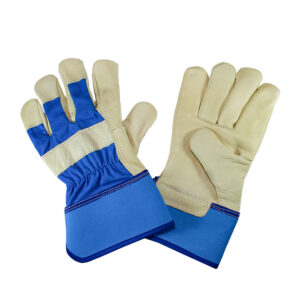
For generations, people have relied on leather for protective apparel, and good reason. For leather hand gloves, its distinctive qualities make it the best option, particularly in hard industrial settings. However, why is leather such a good protective material? Let’s examine the scientific basis for leather’s protective qualities and the reasons it is the preferred material for safety gloves.
1. Natural Durability and Strength
Animal hides are used to make leather because they are inherently suited to withstand the elements. Because of its dense fibre structure, which makes it resistant to abrasions, tears, and punctures, it has extraordinary strength and durability. Leather hand gloves are therefore ideal for jobs involving heavy machinery, sharp objects, or uneven terrain.
2. Heat and Flame Resistance
The capacity of leather to tolerate high temperatures is one of its most notable qualities. Leather doesn’t burn easily because of its high ignition point. Because of this, it’s a great option for welding gloves or gloves used in hot conditions. Furthermore, leather provides an additional barrier against heat by forming a protective char coating when exposed to flames.
3. Flexibility and Comfort
Leather is surprisingly supple for such a strong material. Leather’s inherent fibres enable it to conform to the hand’s shape and provide a pleasant fit. This adaptability guarantees that leather hand gloves won’t impede mobility, enabling employees to do jobs with ease and accuracy.
4. Resistance to Wear and Tear
Because of its thick structure, leather is very resilient to deterioration. Leather resists deterioration from friction and repeated use better than synthetic materials. Because of their durability, leather hand gloves are an affordable option for sectors including manufacturing, mining, and construction.
5. Natural Water Resistance
Natural oils found in leather give it some degree of water resistance. Leather helps keep hands dry in rainy environments by repelling water and moisture, even though it isn’t completely waterproof. In industries like oil and gas or outdoor work settings, this feature is especially helpful.
6. Breathability
Because leather is a breathable material, perspiration cannot accumulate and air can flow freely. Because it lessens discomfort and the chance of skin irritation, this is essential for employees who wear gloves for extended periods. Even after extended workdays, breathable leather gloves keep hands cool and dry.
7. Chemical Resistance
Some leathers, like chrome-tanned leather, provide oil and chemical resistance. Because of this, leather hand gloves are appropriate for handling dangerous materials in settings like labs and chemical production.
8. Natural Grip Enhancement
When handling equipment or materials, the natural traction that leather’s texture offers lowers the chance of slipping. This is particularly crucial in sectors like construction and auto repair where accuracy and security are essential.
9. Shock Absorption
The thick structure of leather also protects hands from impact injuries by absorbing vibrations and shocks. Because of this, leather hand gloves are perfect for jobs involving large machinery or vibration-producing equipment.
The science behind leather’s protective properties makes it an exceptional material for hand gloves, particularly in challenging industrial environments. Its natural durability, heat resistance, comfort, and breathability contribute to its effectiveness as a protective apparel choice. Additionally, leather’s resilience to wear and tear, water resistance, and chemical properties further enhance its functionality. Not only does leather provide natural grip and shock absorption, but it also offers unparalleled protection and performance. For those requiring both safety and performance in demanding tasks, leather hand gloves remain a trusted and versatile choice. As a reputable leather hand gloves manufacturer in India, we take pride in crafting high-quality gloves that meet the rigorous demands of various industries.









